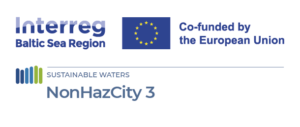Within the NonHazCity project samples of wastewater were collected and analysed from residential and industrial areas, wastewater treatment plants, stormwater and sewage sludge in six municipalities around the Baltic Sea: Pärnu (Estonia); Kaunas and Šilalė (Lithuania); Riga (Latvia); Gdańsk (Poland) and Turku (Finland). Existing data from Stockholm and Västerås (Sweden) was used for comparison.
Pärnu
Kaunas
Šilalė
Riga
Gdańsk
Turku
Stockholm
Västerås
“NonHazCity: key findings from the hazardous substance screening in the Baltic Sea region”
19th of October at 10:00 am (CET)
th
click to readhttp://www.rechtsanwalt-haussuehl.dereplica watch salecool phone casesvape elfbarhandyhulle zum umh盲ngenpixel 6 phone casearmenianfilmfestival
On 19th of October the event started with the deputy project manager, Heidrun Fammler (Baltic Environmental Forum), shortly presenting the NonHazCity project – a flagship of the Baltic Sea Region. After that, the project manager, Dr. Tonie Wickman (City of Stockholm), presented the results and conclusions from the substance screening and source tracking activities. She will also highlighted possible action municipal administration itself as well as companies and businesses in the towns and all citizens can undertake to reduce emissions of these substances to the sewage system and with it to the Baltic Sea.
th
Rainer Aavik who is the deputy mayor of the Pärnu city – one the Baltic Sea region cities where substances were screened – drew conclusions from the screening results in Pärnu. Furthermore, he explained how international co-operation, as in NonHazCity, can help to value the green mindset and green economy, as well as increase awareness of the society at local level.

